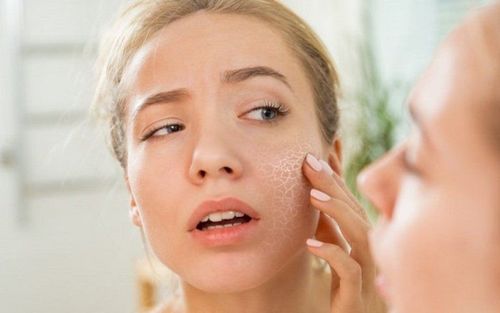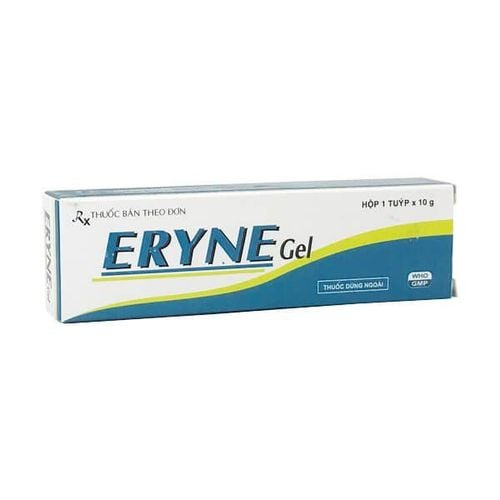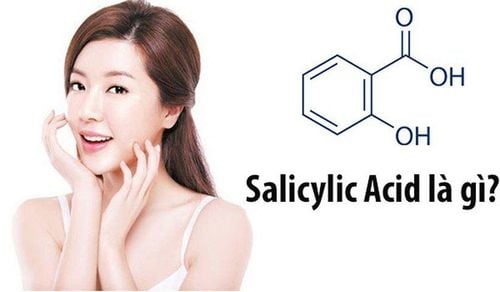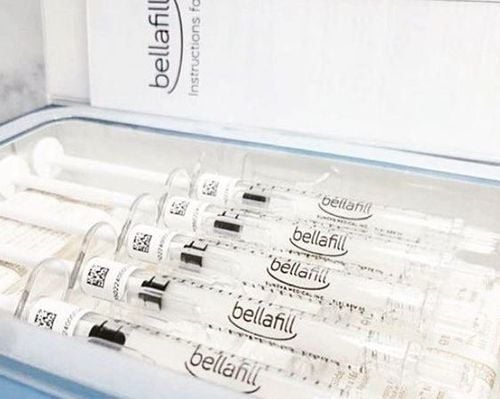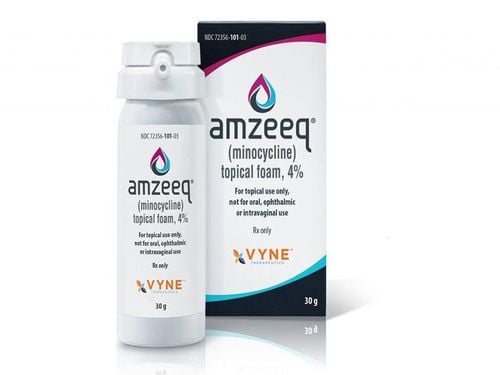This is an automatically translated article.
AHA and BHA in cosmetics can be found easily through products such as: cleanser, toner, moisturizer, mask, ... So what is AHA and BHA in cosmetics and what is the difference how?
1. What are AHA and BHA in cosmetics?
AHA and BHA are types of hydroxy acids, specifically AHA is alpha hydroxy acid, BHA is beta hydroxy acid, found in many cosmetics such as: cleanser, toner, moisturizer, exfoliating cream, face peels, masks. In most products, AHAs and BHAs work to exfoliate the skin, partially or completely depending on the concentration.
Cosmetics containing AHA and BHA are both known to effectively exfoliate the skin deeply. However, there are still some differences between AHAs and BHAs, mainly in terms of specific uses of each.
2. General effects of cosmetics containing AHA and BHA
AHA and BHA are both acids that have the ability to remove dead skin cells with the main effects being:
Reduce inflammation in acne Prevent acne Prevent large pores Prevent wrinkles Even skin tone
3. What is the difference between AHA and BHA in cosmetics?
AHA is a water-soluble acid, extracted from fruit containing sugar, has the effect of removing dead skin cells on the surface, from there, forming and replacing with new skin cells. Skin pigmentation is more even and smooth. Meanwhile, BHAs are oil-soluble acids, they have the ability to penetrate deeper into the pores to both remove dead skin cells inside and excess sebum.
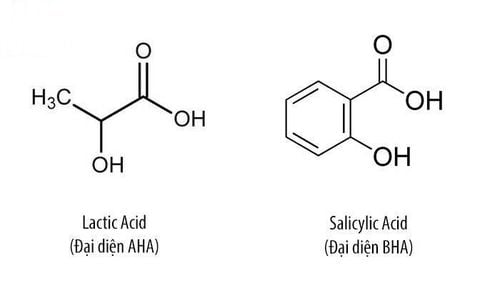
Những loại mỹ phẩm AHA BHApha có đặc tính khác nhau
4. How to choose cosmetics containing AHA and BHA?
AHAs are mainly used by people who have the following conditions:
Melasma, age spots Enlarged pores Wrinkles on the skin Uneven skin color Although cosmetics containing AHAs are widely available in the market with The information is safe for all skin types, however, people with sensitive or dry skin should pay attention, as they can cause skin irritation when used. So when choosing cosmetics containing AHA and BHA, you need to pay special attention.
Cosmetics containing BHA are often introduced and sold to people who have acne or skin problems caused by sun damage. With the main use is to penetrate deep inside the hair follicle to remove dead skin cells and excess oil to help open pores. BHAs are best suited for people with combination or oily skin.
For those with sensitive skin, use a product containing a lower concentration of BHA to help soothe the skin. Besides, BHA is also recommended to people with rosacea to help reduce redness on the skin.
Dermatologists share tips on choosing cosmetics containing AHA and BHA, that is, if you want to soothe dry skin or fight aging, try AHA, and if you want to treat acne, use BHA.
5. How to use cosmetics containing AHA
Using cosmetics containing AHA is a highly effective therapy to help remove dead skin cells. But with different acids and with different concentrations, the usage and effects will also be different. To avoid skin irritation, you should choose cosmetics containing AHAs with concentrations in the range of 10% - 15%, the maximum.
How to use is to apply the product every other day until the skin gets used to the product, thus reducing the risk of skin irritation and other unwanted side effects.
With the powerful exfoliating effect, AHA-containing cosmetics can affect the skin when exposed to the sun, especially those with sensitive skin. So, to prevent facial burns and increase the risk of age spots and skin cancer, use sunscreen.
5.1 Glycolic Acid This is the most commonly used AHA, extracted from sugar cane, which is highly effective, so glycolic acid is used to treat many different skin conditions. Glycolic acid has high antibacterial properties, so it can help prevent acne effectively.
You can find glycolic acid in the ingredients of some exfoliating products, cleansers, toners, face masks, etc.
5.2 Lactic acid Lactic acid is also one of the common AHAs. Use, which is prepared from lactose found in milk, with the main effect of preventing skin aging and exfoliating. You can find lactic acid in the ingredients of some exfoliating products, toners, ...
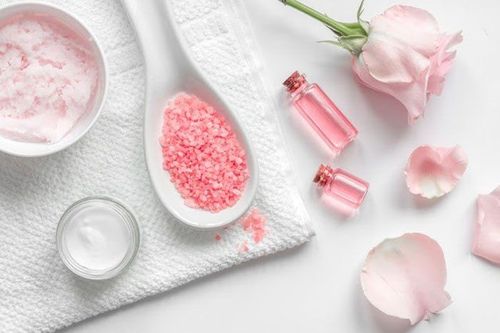
Axit lactic bên trong mỹ phẩm chứa aha và bha có trong nước hoa hồng
5.3 Tartaric Acid Extracted from grapes, tartaric acid is a lesser known AHA that works to reduce acne and other skin problems caused by the sun. You can find tartaric acid in the ingredients of several types of exfoliants, anti-aging moisturizers, ...
5.4 Citric Acid Citric acid is extracted from a citrus fruit. , whose main effect is to even out rough skin, neutralizing pH on the skin. Citric acid is the main ingredient in toners or serums, often applied to the skin before moisturizer or used with sunscreen to protect the skin from UV damage.
Citric acid is mainly found in sunscreens, scrubs, skin restorations, ...
5.5 Malic Acid Malic acid is a form of AHA and BHA and is made from apple acid. Malic acid is not effective when used alone, it mainly helps other acids work more effectively. So you can find malic acid in the ingredients of some nighttime exfoliants, in combination with BHAs.
5.6 Mandelic Acid Extracted from almonds, mandelic acid is composed of larger molecules and is often used in combination with other AHAs to increase the effectiveness of exfoliation.
To change pore size or improve skin texture, mandelic acid is formulated and manufactured in individual form. You can find mandelic acid in the ingredients of some combination products such as exfoliating creams, hair removal.
6. How to use cosmetics containing BHA
You can use cosmetics containing BHA daily, however, like many other cosmetics, before using a large and regular amount, it is recommended to use a moderate amount with a frequency of several times a week when starting to use Use it to get used to the product.
Compared with AHA, in the sun, BHA does not make the skin more sensitive. However, to prevent sun damage, you should still wear sunscreen every day.
6.1 Salicylic Acid Known as a popular BHA, salicylic acid has a concentration in the range of 0.5% - 5%, with the main effect being to treat acne, reduce inflammation, and swelling.
Some products contain salicylic acid, a cooling and toning moisturizer, an oil-free acne cleanser, and a blackhead dissolving gel.
6.2 Citric Acid Normally, citric acid is known to be an AHA, but you can also find citric acid in BHA formulas, but works to remove dead skin cells deep in the pores and copper. while drying the excess sebum in it.
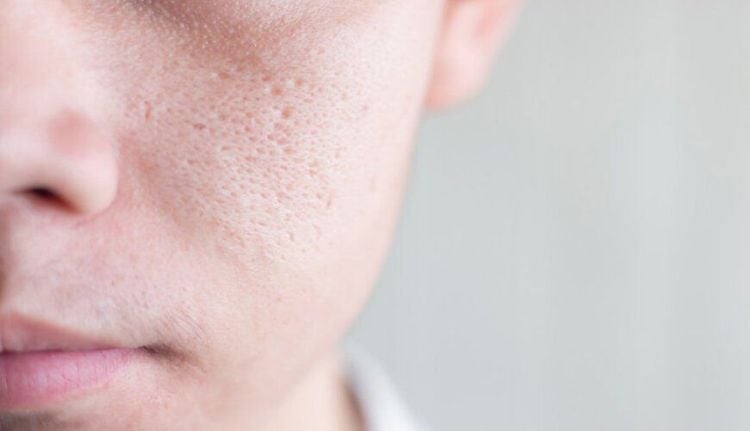
Axit citric trong mỹ phẩm chứa AHA và BHA giúp làm sạch tế bào chết
7. How to combine cosmetics containing AHA and BHA
Using a combination of cosmetics containing AHA and BHA is considered to bring about a smoother and firmer skin, due to increased collagen production in the epidermis and dermis. As a result, some products are prepared with a combination of the two but are used less frequently than each individual type.
However, AHA and BHA should not be used at the same time, as they are both exfoliants, which can cause dryness and skin irritation.
To use cosmetics containing AHA and BHA effectively, dermatologists recommend using one in the morning and the other at night, or using alternate days. Or you can also use these acids for certain spots on the face, for example, use AHAs for dry areas, and BHAs for oily areas.
AHA and BHA in cosmetics have common and similar effects. The difference is that AHAs are often used for anti-aging purposes, while BHAs are suitable for treating acne and dermatitis.
It can be seen that AHA and BHA bring a lot of benefits when it comes to treating most skin problems. However, to get healthy, shiny skin, you should still consult a doctor, skin specialist before using.
Visit Vinmec International General Hospital website to get more information about a perfect skin care routine as well as understand more about cosmetic ingredients suitable for each person's skin condition.
Please dial HOTLINE for more information or register for an appointment HERE. Download MyVinmec app to make appointments faster and to manage your bookings easily.
Reference source: healthline.com



